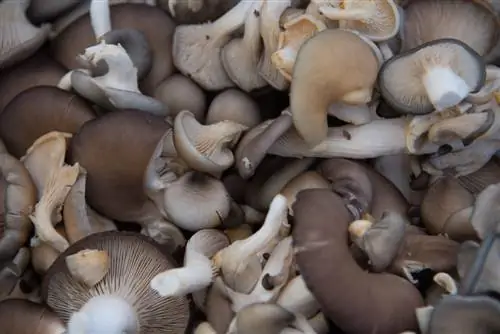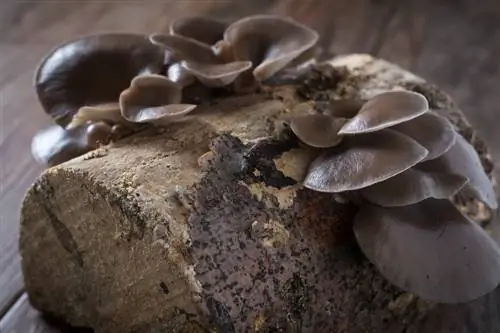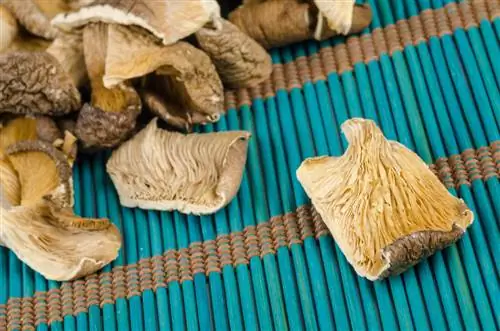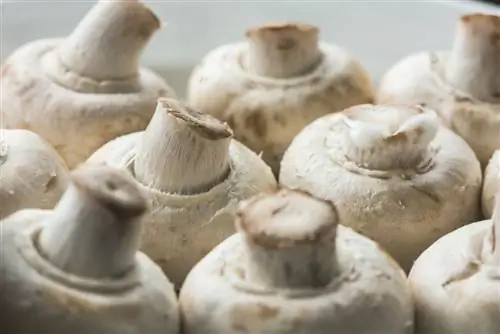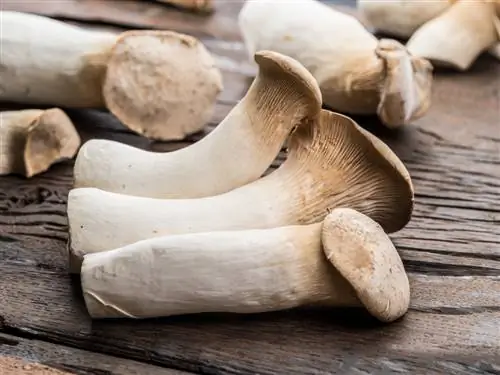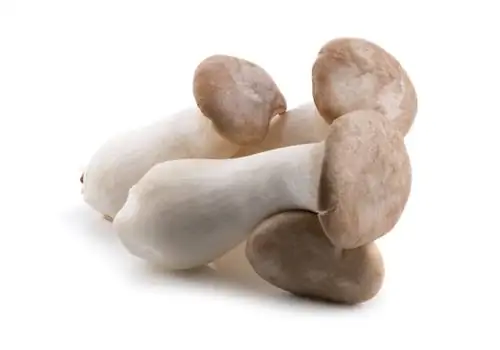- Author admin [email protected].
- Public 2023-12-16 16:46.
- Last modified 2025-01-23 11:21.
Oyster mushrooms or oyster mushrooms are very tasty edible mushrooms that are not nicknamed “veal mushroom” without reason. The mushrooms can be found mainly on beech and oak trees between December and March, but they can also be grown at home quite easily. But whether you collect it yourself, grow it or buy it in the supermarket: you can often find white fuzz on oyster mushrooms. However, this is not mold that is dangerous to he alth.

Is white mold on oyster mushrooms dangerous?
White fuzz on oyster mushrooms is not a harmful mold, but rather the edible mushroom mycelium. As long as the mushrooms look fresh and he althy, they are safe to eat. Be careful with spoiled mushrooms that are mushy or smell unpleasant.
Is white mold on oyster mushrooms dangerous?
A white down on the oyster mushrooms, which runs through the fruiting bodies with numerous fine threads, is not mold. Instead, it is the actual fungus, the mycelium, which grows from the spores of ripe oyster mushrooms under the right conditions and develops a new fungal network. This mycelium can be eaten without any problems - unlike real mold, it is not poisonous and does not pose a he alth risk in any other way. You can simply wipe off the white threads with a dry cloth or simply cook them - they will no longer be visible in the later dish as they will dissolve.
When to throw away oyster mushrooms
If the oyster mushrooms are not only covered in mycelium, but also generally look bad, you should dispose of them immediately. Fresh mushrooms are crunchy, look he althy and have a pleasant, mushroomy smell. But if instead
- smell strong or unpleasant
- no longer looking fresh
- but have lots of dark spots
- are muddy and have rotten spots
- perhaps even covered with a colored or dark down,
you should dispose of them immediately with household waste or compost. In this case, they are actually spoiled and you would risk food poisoning if you were to prepare and eat them. By the way, typical mold on mushrooms is not white, but usually black, brown or green - depending on what type it is.
Store oyster mushrooms properly
To prevent fresh oyster mushrooms from molding or going bad so quickly, you should either prepare them immediately or store them properly. Stored in a cool, dry and dark place, oyster mushrooms will last for up to three days, although they are best stored in the vegetable drawer of the refrigerator. Since mushrooms need to breathe, you should not pack them in plastic packaging or Tupperware containers or wrap them in foil. Instead, they should be wrapped in a clean and dry cotton or linen cloth.
Tip
Since mushrooms also absorb smells very quickly, fresh oyster mushrooms have no place near intensely smelling cheeses and sausages. Otherwise your mushrooms would quickly taste like Roquefort or salami.

